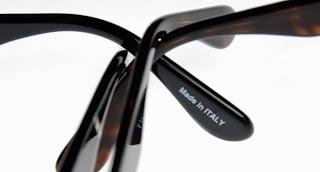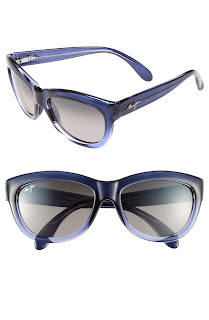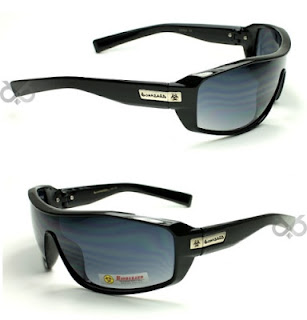Many websites on the internet sell sunglasses. Many of them claim they are authentic, some don't exactly say authentic but trick you into thinking replicas are authentic. In reality, it takes a smart shopper to determine which sites can be trusted. This guide will help you apply good judgment in determining which sites sell authentic products:
- Return policy: Stay away from web sites that will not take returns.
- Look carefully at the wording. Most official resellers who sell genuine sunglasses would let you know that what they are selling is authentic. So look for guaranteed authenticity.
- Quality: If a website is claiming that their sunglasses are "high quality", then this may be a cause for concern. Designer brand name sunglasses have a brand for a reason -- the brand speaks for the quality, and it's constant throughout. They may be talking about good
quality knockoffs.
 |
| How to tell if sunglasses are fake or authentic? |
- Examine the photos for packaging. Brand new sunglasses are always packed in a box and supplied with cleaning back and warranty card. Don't trust any seller who doesn't provide those items. The one and only case a seller can lack some of these items is when the sunglasses are not brand new and that cant is a good deal anyway.
- Sometimes fake 'designer' items may say 'designer inspired'. Don't fall for that trick; they say that so they don't get in trouble.
- Guarantee: A web site selling authentic sunglasses will always have a guarantee of authenticity. If there isn't one, you should be concerned.
- Beware of fake packaging. Since many fraud sellers are aware of what a buyer is going to look at first, they try to either fake a box supplied or use a box from a different model.
- Look at the code on the interior temple arm of the glasses. Once you have it, look at the designer site and verify the model number is authentic, a current style, appropriate color, etc.
-Beware of deals too good to be true.
- Look at the code on the interior temple arm of the glasses. Once you have it, look at the designer site and verify the model number is authentic, a current style, appropriate color, etc.
-Beware of deals too good to be true.
- Research. Consider researching the work required to get a good deal when you find it. In the age of the Internet, every sunglasses company has its own website. You should take advantage of it.
- Use caution if the auction seller is using official photos taken from the designer. They may be copy and pasting the photo but selling you something that only looks similar. Make sure that the vendor doesn't use official photos. Well, in that case, you should ask to email you a few real photos. When you get the pictures, look carefully for anything unusual.
- Skip any item with words like "-style" in the title. That word is just screaming that it's a fake item.
- Ask the seller if the items are 100% authentic by and if you find the item isn't authentic they will refund your money, shipping, and handling. If they say no, you should beware.
Whenever you buy online it is important to protect yourself. Always buy designer sunglasses from stores that clearly display contact details and a company registration number on their website. Genuine online retailers have to comply with certain rules, one of them is the obligation to have a refund policy that complies with distance selling laws. Make sure you read their delivery and returns, terms and conditions and privacy policies before you purchase.















